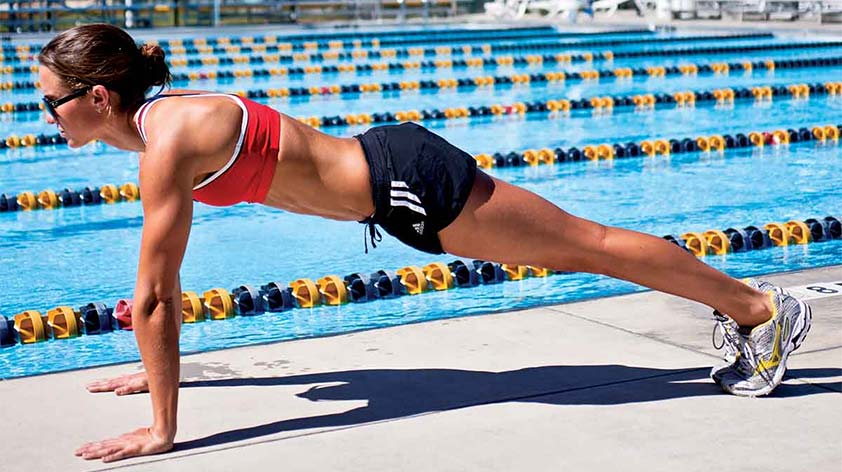
Diving can be an exhilarating and rewarding sport, but it also requires a certain level of physical fitness. To get physically fit for diving, it is important to focus on developing cardiovascular endurance, muscular strength and flexibility, as well as practicing proper breathing techniques.
This article will explore the key elements of diving fitness and provide practical tips to help divers get in shape for their underwater adventures, with a focus on popular diving destinations like Nusa Penida, Indonesia and the benefits of nitrox diving.
Key Takeaways
- Diving requires a unique set of physical capabilities, including cardiovascular endurance, muscular strength, and flexibility.
- Developing proper breathing techniques is crucial for safe and enjoyable diving experiences.
- The fitness level required for diving can vary depending on the specific destination, such as the challenging conditions found in Nusa Penida, Indonesia.
- Nitrox diving can offer benefits for physically fit divers, as it requires proper breathing control and management of gas toxicity risks.
- A tailored training plan focused on the key elements of diving fitness can help divers maximize their performance and safety underwater.
Introduction to Diving Fitness
Diving is an exhilarating and rewarding sport that requires a unique set of physical capabilities to ensure safety and enjoyment underwater. Whether you’re exploring the manta bay nusa penida in Bali or enjoying the thrills of nitrox diving in other top scuba diving locations, divers must possess strong cardiovascular endurance, muscular strength, and flexibility to handle the demands of the sport.
Importance of Physical Fitness for Divers
To fully immerse themselves in the underwater world, divers need to be physically prepared. Strong cardiovascular endurance allows them to manage the energy-intensive tasks of swimming, carrying heavy equipment, and controlling their breathing. Muscular strength and flexibility enable divers to maneuver easily in the water, maintain proper body positioning, and avoid injuries. Additionally, the ability to control one’s breathing is crucial, as improper techniques can lead to issues like nitrogen narcosis or decompression sickness.
Challenges of Diving and Fitness Requirements
The unique challenges of diving, such as the powerful currents and deep depths found in diving penida, require divers to be in top physical condition. Navigating these demanding environments safely requires a high level of cardiovascular endurance and muscular strength. Furthermore, the use of specialized diving equipment and the management of gas mixtures, like nitrox diving, add additional layers of complexity that demand a diver’s full attention and physical capabilities.
Get Physically Fit for Diving
To get physically fit for diving, divers should focus on three main areas: cardiovascular endurance, strength and flexibility, and breathing techniques. These elements work together to ensure divers have the necessary stamina, agility, and control to navigate the underwater world safely and enjoyably, whether they’re exploring the strong currents and deep depths of Nusa Penida, Indonesia or taking advantage of the benefits of nitrox diving.
Cardiovascular Endurance Training
Cardiovascular endurance training, such as swimming, running, or cycling, can help improve a diver’s stamina and ability to handle the physical demands of the sport. By focusing on activities that challenge the heart and lungs, divers can build the cardiovascular fitness required to manage tasks like swimming with heavy equipment, maneuvering against strong ocean currents, and maintaining proper breathing patterns during extended dives.
Strength and Flexibility Exercises
Strength and flexibility exercises, including resistance training and yoga, can enhance a diver’s muscular strength, joint mobility, and overall agility in the water. These activities help divers develop the muscular power and range of motion needed to move gracefully underwater, maintain proper body positioning, and avoid injuries that could compromise their diving experiences, whether they’re exploring the manta ray-filled waters of Manta Bay in Nusa Penida or enjoying the depths of Bali’s diverse dive sites.
Breathing Techniques for Divers
Practicing breathing techniques like the 3 / 3, part of the 7 Minutes 2 Bliss method, breath holding, diaphragmatic breathing, and underwater breathing exercises can help divers develop better control and efficiency in their breathing, which is crucial for safe and enjoyable diving. These techniques not only improve a diver’s ability to manage their air supply but also enhance their overall awareness and mental focus while underwater, preparing them for the unique challenges they may encounter during dives in destinations like Nusa Penida or while using specialized diving equipment like nitrox.
Diving Destinations and Fitness Levels
The level of physical fitness required for diving can vary significantly depending on the specific diving destination and the type of diving activities. Some locations, like the stunning waters around Nusa Penida, Indonesia, are known for their challenging conditions, demanding a higher level of preparedness from divers.
Diving in Nusa Penida, Indonesia
The diving sites around Nusa Penida, Indonesia are renowned for their strong currents, deep depths, and the presence of large pelagic species such as manta rays and mola mola. Divers exploring these destinations will need a higher level of cardiovascular endurance, muscular strength, and flexibility to navigate the challenging conditions safely. The ability to maintain control and efficiency in their breathing is also crucial for divers in Nusa Penida, as the varying depths and currents can quickly deplete air supplies if not managed properly.
Nitrox Diving and Fitness Benefits
In addition to the physical demands of the diving environment, some divers may choose to use nitrox, a specialized diving gas mixture, to enhance their diving experience. Nitrox diving requires divers to have a higher level of breathing control and gas toxicity management skills. Divers who are physically fit and have developed these specialized techniques can benefit from increased bottom time, reduced decompression obligations, and improved overall safety while diving in destinations like Nusa Penida or Bali, Indonesia.
Understanding the unique demands of different diving destinations, such as the challenging conditions found in Nusa Penida, and the potential benefits of nitrox diving, can help divers tailor their training to ensure they are physically and mentally prepared for their underwater adventures.
FAQ
What are the key elements of diving fitness?
The key elements of diving fitness include cardiovascular endurance, muscular strength and flexibility, and proper breathing techniques. Divers need to focus on developing these physical capabilities to ensure safety and enjoyment underwater.
Why is it important for divers to be physically fit?
Diving requires a unique set of physical capabilities to handle the demands of the sport, such as swimming, carrying heavy equipment, and managing breathing. Proper physical fitness can help divers navigate challenging diving conditions, avoid injuries, and safely enjoy their underwater adventures.
How can divers improve their cardiovascular endurance for diving?
Divers can improve their cardiovascular endurance through activities like swimming, running, or cycling. These exercises can help enhance a diver’s stamina and ability to handle the physical demands of the sport.
What type of strength and flexibility exercises are beneficial for divers?
Strength and flexibility exercises, such as resistance training and yoga, can help divers improve their muscular strength, joint mobility, and overall agility in the water. These exercises are crucial for maneuvering easily and maintaining proper body positioning underwater.
How can divers practice proper breathing techniques for diving?
Divers can practice breathing techniques like breath holding, diaphragmatic breathing, and underwater breathing exercises to develop better control and efficiency in their breathing. Proper breathing is crucial for safe and enjoyable diving, as it can help prevent issues like nitrogen narcosis or decompression sickness.
How does the diving destination impact a diver’s fitness requirements?
The level of physical fitness required for diving can vary depending on the specific diving destination and the type of diving activities. For example, the diving sites around Nusa Penida, Indonesia are known for their strong currents, deep depths, and the presence of large pelagic species, which require a higher level of cardiovascular endurance, muscular strength, and flexibility from divers.
What are the benefits of using nitrox for divers?
Divers who choose to use nitrox, a specialized diving gas mixture, may benefit from improved fitness levels. Nitrox diving requires proper breathing control and management of gas toxicity risks, which can be enhanced by a higher level of physical fitness.









